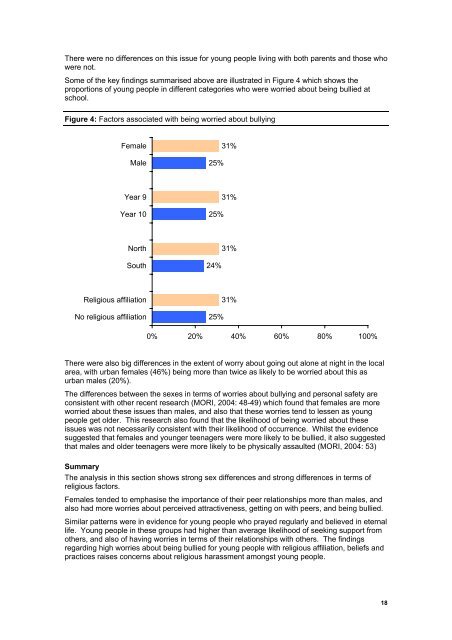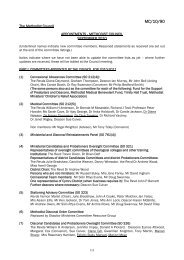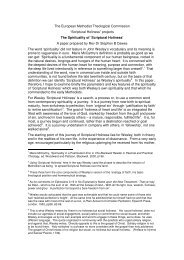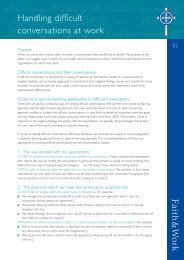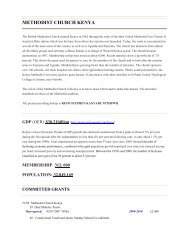Spiritual Health and the Well-Being of Urban Young People
Spiritual Health and the Well-Being of Urban Young People
Spiritual Health and the Well-Being of Urban Young People
Create successful ePaper yourself
Turn your PDF publications into a flip-book with our unique Google optimized e-Paper software.
There were no differences on this issue for young people living with both parents <strong>and</strong> those whowere not.Some <strong>of</strong> <strong>the</strong> key findings summarised above are illustrated in Figure 4 which shows <strong>the</strong>proportions <strong>of</strong> young people in different categories who were worried about being bullied atschool.Figure 4: Factors associated with being worried about bullyingFemaleMale25%31%Year 9Year 1025%31%NorthSouth24%31%Religious affiliationNo religious affiliation25%31%0% 20% 40% 60% 80% 100%There were also big differences in <strong>the</strong> extent <strong>of</strong> worry about going out alone at night in <strong>the</strong> localarea, with urban females (46%) being more than twice as likely to be worried about this asurban males (20%).The differences between <strong>the</strong> sexes in terms <strong>of</strong> worries about bullying <strong>and</strong> personal safety areconsistent with o<strong>the</strong>r recent research (MORI, 2004: 48-49) which found that females are moreworried about <strong>the</strong>se issues than males, <strong>and</strong> also that <strong>the</strong>se worries tend to lessen as youngpeople get older. This research also found that <strong>the</strong> likelihood <strong>of</strong> being worried about <strong>the</strong>seissues was not necessarily consistent with <strong>the</strong>ir likelihood <strong>of</strong> occurrence. Whilst <strong>the</strong> evidencesuggested that females <strong>and</strong> younger teenagers were more likely to be bullied, it also suggestedthat males <strong>and</strong> older teenagers were more likely to be physically assaulted (MORI, 2004: 53)SummaryThe analysis in this section shows strong sex differences <strong>and</strong> strong differences in terms <strong>of</strong>religious factors.Females tended to emphasise <strong>the</strong> importance <strong>of</strong> <strong>the</strong>ir peer relationships more than males, <strong>and</strong>also had more worries about perceived attractiveness, getting on with peers, <strong>and</strong> being bullied.Similar patterns were in evidence for young people who prayed regularly <strong>and</strong> believed in eternallife. <strong>Young</strong> people in <strong>the</strong>se groups had higher than average likelihood <strong>of</strong> seeking support fromo<strong>the</strong>rs, <strong>and</strong> also <strong>of</strong> having worries in terms <strong>of</strong> <strong>the</strong>ir relationships with o<strong>the</strong>rs. The findingsregarding high worries about being bullied for young people with religious affiliation, beliefs <strong>and</strong>practices raises concerns about religious harassment amongst young people.18


